Saiph, also known as Kappa Orionis, is the sixth brightest star in the constellation of Orion, the celestial hunter. It is also one of the four stars that comprise Orion’s main quadrangle.
Key Facts & Summary
- Saiph is a supergiant star of spectral type B0. 5 la, located at around 650 light-years / 198 parsecs away from the Sun.
- It is a variable star with an apparent magnitude of 2.09 and an absolute magnitude of -6.1. Its brightness changes slightly, varying by 0.4 magnitudes.
- The bright supergiant star has exhausted its supply of hydrogen and evolved off from the main-sequence.
- Saiph is most likely a supernova candidate that will explode in the near future.
- The star has very powerful stellar winds which are causing it to lose mass at a rate of one solar mass every 1.1 million years.
- Saiph is several times bigger than our Sun. It has around 15.50 solar masses and around 22.2 solar radii.
- The bright giant has enormous energy output. It is 56.881 times brighter than our sun.
- Saiph is considerably hotter than our sun, with estimated average surface temperatures being at around 26.500 K.
- The star is also spinning very fast. Saiph’s rotational velocity has been estimated to be at around 83 kilometers / 51.5 miles per second.
- Saiph has an estimated surface gravity of around 2.9 cgs, and its radial velocity has been estimated to be at around +20.5 km / +12.7 mi per second.
- Saiph is much younger than our sun, having an estimated 11.1 million years.
- Saiph, in comparison to other famous stars, is smaller, less luminous yet hotter than Rigel. It is also fainter than Alnitak and Alnilam but outshines Mintaka.
- Saiph seems to lack any companions and will probably continue to remain as such since it has a short lifespan.
Saiph is part of many asterisms in the constellation of Orion, however, its name implies that it may have been part of yet another asterism, or if not then it was probably mistakenly designated as such.
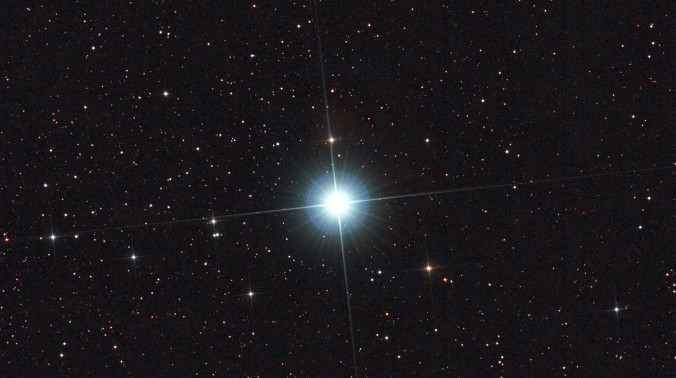
The name Saiph, comes from the Arabic phrase “saif al jabbar” – which translates to “the sword of the giant.” The giant, of course, refers to Orion and the Orion’s Sword asterism of which Saiph is not part of. This name was also used for Eta Orionis, which is a multiple star system located near Mintaka, in the direction of Rigel.
Formation
Saiph is much younger than our sun, and quite a young star in general. It was formed 11.1 million years ago and, it is possible that it may have originated in the Orion Molecular Cloud Complex.
It may be part of one of the stellar associations of Orion. Molecular clouds of dust and gas contribute to the creation of new stars. Gravity pulls the swirling gas and dust together and results in new stars being formed.

Distance, Size, and Mass
Saiph is located at around 650 light-years / 198 parsecs away from the Sun. Its distance from us is very similar to another famous star, Betelgeuse. Saiph is the 60th brightest star in the night sky and can be observed with the naked eye.
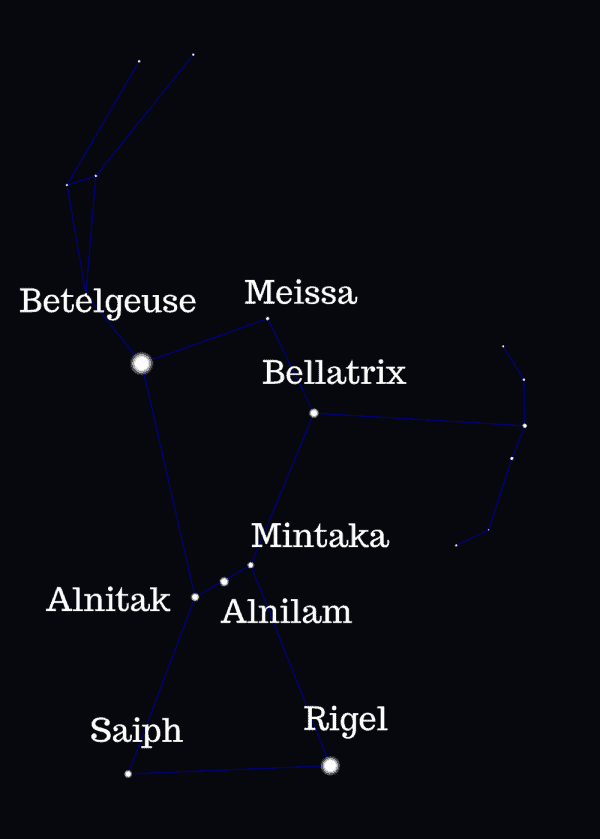
The bright star is several times bigger than our Sun. It has around 15.50 solar masses, or 1.550 % the sun’s mass, and has around 22.2 solar radii, or 2.220 % the sun’s radius.
Other Characteristics
Saiph is a bluish-white supergiant star of spectral type B0. 5 la – “la” represents the fact that the bright giant has exhausted its hydrogen supplies and evolved away from the main sequence.
Saiph is a variable star with an apparent magnitude of 2.09 and an absolute magnitude of -6.1. Its brightness changes slightly, varying by 0.4 magnitudes. The star has very powerful stellar winds which are causing it to lose mass at a rate of one solar mass every 1.1 million years.
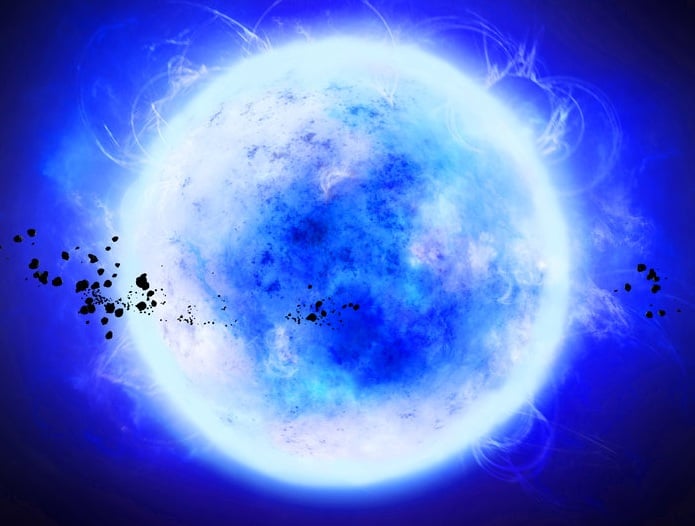
The bluish-white giant has enormous energy output. It is 56.881 times brighter than our sun. Saiph is considerably hotter than our sun, with estimated average surface temperatures being at around 26.500 K, or around 4.5 times hotter than our sun. Its much hotter than even Rigel, Orion’s brightest star.
Due to its high temperatures, most of its light is emitted in the invisible ultraviolet wavelengths. Saiph is also spinning very fast. Its rotational velocity has been estimated to be at around 83 kilometers / 51.5 miles per second. Saiph has an estimated surface gravity of around 2.9 cgs, and its radial velocity has been estimated to be at around +20.5 km / +12.7 mi per second.
Location
Saiph is located in the constellation of Orion, the celestial hunter. It is just under Orion’s belt. The bluish-white supergiant marks the celestial hunter’s right knee or southeast corner.
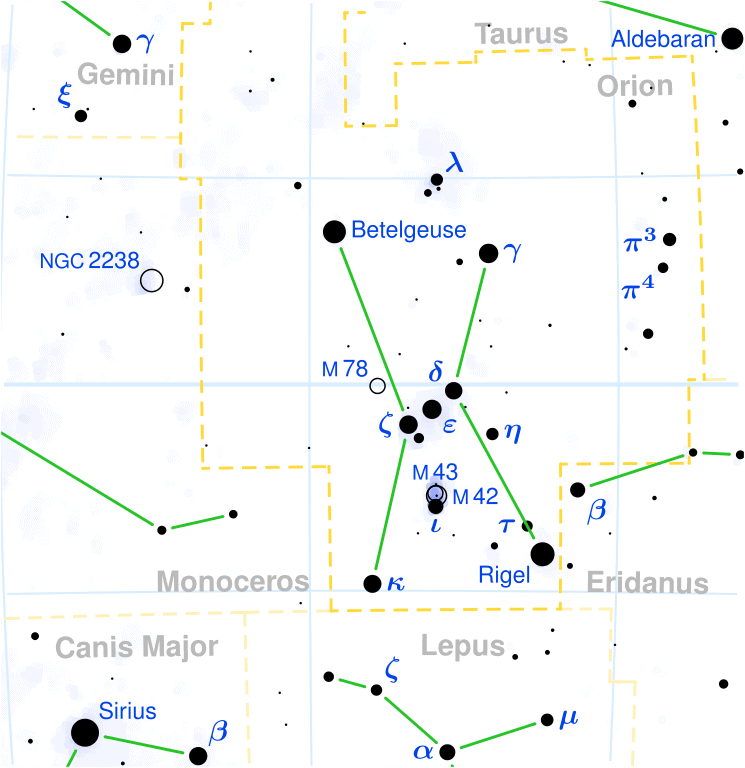
Saiph, along with Rigel, Betelgeuse, and Bellatrix, outlines Orion’s familiar hourglass pattern. Saiph appears at the lower-left corner of Orion for observers in the northern hemispheres, and at the upper left corner to observers south of the equator.
The constellation of Orion holds many famous stars, asterisms, and interesting deep-sky objects. There are many open clusters, nebulas, and stars there that are best observed during the month of January. To observers situated in the northern hemisphere, Orion is seen in the evening sky throughout the winter months.
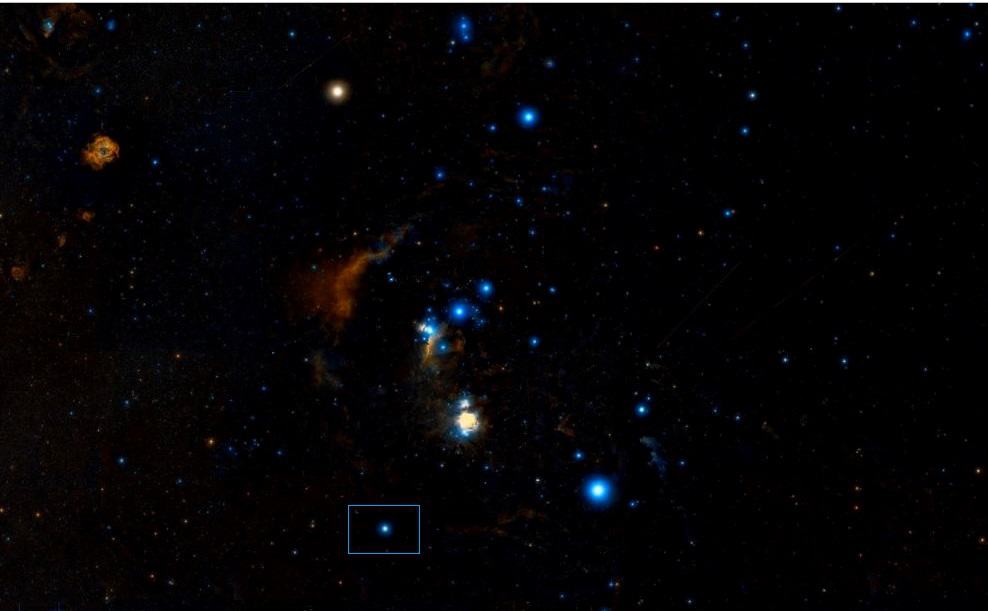
The Future
Since it has such a high mass, Saiph has already stopped fusing hydrogen in its core. The star will continue to expand and lose mass until it will evolve into a red giant and then end its life cycle in a supernova explosion. Curiously, many stars in the constellation of Orion have already or are on their way to meet the same fate.
Did you know?
- Saiph orbits the Milky Way’s galactic core at a distance between 24.000 and 26.000 light-years. It has approached our Sun at a distance of 56 light-years, but this happened millions of years ago.
- The aboriginal people of the Northern Territory of Australia, called the Wardaman people, associated Saiph with the myth of the Black-headed Python – “Walijabi” – who created a canyon with a Guman digging stick.
- In the 17th century Calendarium of the Egyptian astronomer Al Achsasi al Mouakket, Saith is listed as “the right knee of the giant” referring to the position of the star. It was translated in Latin as Genu Dextrum Gigantis.
- The ancient Chinese knew Saiph as the Sixth Star of Three Stars – referring to an asterism which consisted of the stars in Orion’s Belt, and Betelgeuse, Bellatrix, and Rigel.
Sources:
Image source:
- https://www.astronomytrek.com/wp-content/uploads/2017/07/Saiph-Star.jpg
- https://www.star-facts.com/wp-content/uploads/2019/09/Orion.jpg
- https://wonderdome.co.uk/wp-content/uploads/2019/03/Orion-with-stars-e1552240834729.png
- https://78405a.medialib.edu.glogster.com/SqCLffi5VyEV9Qdrssv0/media/e3/e3a90fb54274d8f5cc22eabebee6d423c1c9520c/rigel-2222.jpg
- https://upload.wikimedia.org/wikipedia/commons/thumb/b/bf/Orion_constellation_map.svg/582px-Orion_constellation_map.svg.png
- https://www.star-facts.com/wp-content/uploads/2019/09/Saiph.jpg
